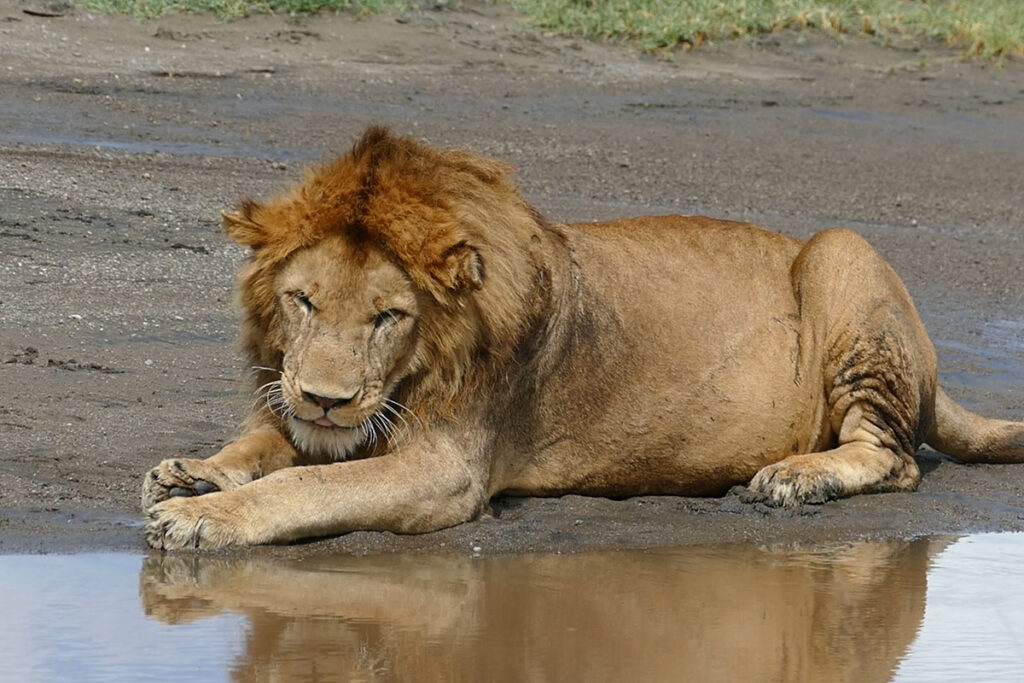Ever wondered how rhythm and history can intertwine artistically? The Hehe traditional dances from Tanzania serve as a vivid embodiment of this cultural symbiosis. These performances, a tapestry of movement and storytelling, offer an evocative glimpse into the rich tapestry of the Hehe people’s heritage.
The essence of Hehe traditional dances lies in their role as a historical narrative, preserving tales through nuanced choreography. Originating from the Iringa region, these dances are not merely for entertainment; they perpetuate the customs of the community. With a recent resurgence in cultural heritage appreciation, these performances have seen a rise in participation by over 30% in local festivals.

Hehe Traditional Dances: Cultural Performances
Hehe traditional dances are a vibrant expression of cultural identity. These dances, rooted in the history of the Hehe people of Tanzania, are more than just performances. They tell stories, celebrate communal bonds, and keep ancient traditions alive. During significant events, such as harvest festivals and weddings, the Hehe gather to dance and celebrate. According to this post, these dances have seen a resurgence in popularity in recent years.
The music that accompanies Hehe dances is filled with traditional instruments. Drums, whistles, and flutes are commonly used, producing lively and rhythmic sounds. Here is a table of common instruments:
| Instrument | Description |
|---|---|
| Drums | Provide the main rhythm |
| Whistles | Sound high-pitched melodies |
| Flutes | Add a melodic layer |
These instruments help create an immersive experience for both dancers and audiences.
Each Hehe dance has unique movements and costumes. The attire often includes colorful garments and beaded adornments. Some dances are slow and somber, reflecting serious themes, while others are fast-paced and energetic. The diversity of these dances showcases the rich cultural tapestry of the Hehe people. When performed at national events, they remind everyone of the importance of preserving cultural heritage.
Modern influences have also found their way into Hehe dances. Young performers sometimes incorporate contemporary moves. This fusion keeps the tradition dynamic and relevant. However, efforts are being made to document and preserve the traditional forms. More information is available according to the article. Through these efforts, Hehe dances continue to thrive, bridging the past and present.
Wahehe Na MANGALA (HEHE TRADITIONAL MUSIC DANCE VIDEO)
The Significance of Dance in Hehe Culture
Dance holds a crucial place in Hehe culture, acting as a bridge between generations. It’s a way to communicate stories, values, and traditions from one generation to the next. During various ceremonies and festivals, dances are performed to honor ancestors and celebrate life’s milestones. These events foster a sense of unity and belonging within the community. The communal aspect of these performances strengthens social bonds among the Hehe people.
The themes of Hehe dances often revolve around everyday life, nature, and spirituality. Each dance move has a specific meaning, reflecting the importance of storytelling in their culture. Here is a list of common themes depicted in Hehe dances:
- Harvest celebrations
- Weddings and births
- War victories
- Spiritual rituals
Through dance, the Hehe people express their deepest emotions and beliefs, making it an integral part of their cultural identity.
Children learn to dance at a young age, ensuring that traditions are passed down and preserved. Elders instruct the youth, teaching them the significance of each dance and its historical context. This practice not only keeps the culture alive but also instills a sense of pride and respect for their heritage. According to this method, the Hehe community ensures the continuity of their rich cultural legacy.
Moreover, dance serves as a form of entertainment and relaxation. After long days of work, engaging in dance brings joy and relief to the community. Events featuring Hehe dances are lively and filled with colors and sounds. These gatherings provide a break from the daily routine and an opportunity for socialization. Dance, therefore, plays a multifaceted role in the lives of the Hehe people, embodying their cultural spirit and fostering community cohesion.
Origins and Evolution of Hehe Traditional Dances
The Hehe traditional dances have deep roots that trace back to the early history of the Hehe people in Tanzania. These dances initially emerged as a vital part of rituals and ceremonies. They were performed to mark important milestones, such as harvest times and spiritual events. Over the years, dance became both a cultural expression and a means of storytelling. It allowed the Hehe people to pass down history and values through generations.
As time progressed, the dances began to adapt and change. The introduction of new instruments and music styles influenced these traditional movements. Here is a table of some significant influences over time:
| Period | Influences |
|---|---|
| Pre-Colonial | Traditional instruments and chants |
| Colonial Era | Incorporation of Western tunes |
| Post-Independence | Fusion with modern dance styles |
These changes demonstrate the adaptability of Hehe dances, ensuring their relevance in various eras.
Today, Hehe dances are a blend of traditional and contemporary elements. Dancers often wear vibrant costumes that reflect both historical and modern influences. The dances continue to convey important cultural narratives, while also serving as a form of artistic expression. This fusion of old and new creates performances that are engaging and meaningful to both locals and visitors.
Efforts to preserve the authenticity of these dances are ongoing. Cultural organizations and local communities work together to document and teach these traditions. This collaboration helps to protect the dances from being forgotten in the fast-paced modern world. The ongoing evolution of Hehe traditional dances showcases the community’s resilience and commitment to cultural pride. Through these efforts, the dances continue to captivate and educate future generations.
Key Elements and Instruments Used in Performances
Hehe traditional dances are marked by their unique elements, each serving a distinct purpose in the performance. The use of rhythm is central, driving the energy of the dance. Dancers move in sync, creating patterns that are visually captivating. Costumes also play an important role, featuring vibrant colors and traditional designs. These costumes not only add visual appeal but also reflect the cultural values of the Hehe people.
Music in Hehe performances is a dynamic blend of voices and instruments. Drums are a key element, setting the rhythm and pace of the dance. There are different types of drums, each offering a unique sound. A table listing some of the key instruments:
| Instrument | Role |
|---|---|
| Ngoma (Drums) | Sets beat and intensity |
| Marimba | Adds melodic harmony |
| Flutes | Introduces high-pitched tunes |
The collaboration of these instruments creates a rich musical backdrop for the dancers.
Traditional songs often accompany the dances, providing narrative and context. These songs are usually passed down orally, preserving the history and stories of the Hehe people. Each song has a specific theme, which informs the dance’s choreography. Themes might include tales of bravery, love, or celebration. This storytelling aspect makes the performances not only entertaining but educational as well.
The role of the community in these performances cannot be overstated. Community members actively participate, whether as performers, musicians, or audience. This involvement fosters a sense of belonging and cultural pride. It ensures that the traditions are kept alive and relevant for future generations.
Overall, the key elements and instruments used in Hehe traditional dances work together to create a harmonious and engaging spectacle. The fusion of movement, music, and storytelling crafts a unique cultural experience. These performances are a vital expression of identity, reflecting the heart and soul of the Hehe people. As they continue to evolve, they remain a beautiful testament to the enduring spirit of the community.
Impact of Modernization on Hehe Dance Traditions
Modernization has brought significant changes to Hehe dance traditions. With the influence of technology and global culture, some traditional aspects are being replaced. Younger generations are exposed to various music and dance styles. This exposure leads to incorporating new elements into the dances. While this evolution keeps the dances relevant, it also poses a challenge to preserving original traditions.
The use of electronic music and modern instruments is becoming more common. Traditional drums and flutes might be replaced with synthesizers and recorded tracks. This shift affects the authenticity of the performances. A table of changes observed in recent years:
| Traditional Element | Modern Influence |
|---|---|
| Ngoma (Drums) | Electronic beats |
| Natural costumes | Western clothing styles |
| Oral songs | Pre-recorded tracks |
While modernization brings variety, it often dilutes traditional values.
However, not all impacts of modernization are negative. Some aspects help in the preservation and promotion of Hehe dances. Videos and social media platforms provide a wider audience for these performances. This exposure can lead to a renewed interest in cultural heritage. It encourages younger generations to learn and participate in traditional dances.
Communities are finding ways to balance tradition and modernity. Workshops and cultural programs are organized to teach traditional dances. These activities ensure that the core essence of Hehe dance is maintained. By embracing positive aspects of modernization, the Hehe people can keep their dance traditions vibrant and meaningful. This blend of old and new elements creates a unique, evolving cultural identity.
Through ongoing efforts, the Hehe community can protect their cultural legacy. Modernization presents both opportunities and challenges. It’s essential to navigate these changes thoughtfully. Preservation activities, alongside embracing beneficial modern influences, offer a path forward. The Hehe dances continue to adapt, reflecting the community’s resilience and creativity.
Revival and Preservation Efforts for Hehe Dances
Efforts to revive and preserve Hehe dances have gained momentum in recent years. Community leaders and cultural organizations are working together. These initiatives aim to teach younger generations about traditional dance forms. Workshops and festivals are frequently held to showcase the dances. By highlighting their cultural importance, these events foster pride and interest among the youth.
Educational programs have been introduced in schools to include traditional dances in the curriculum. Students learn about the history and techniques of Hehe dances. A list of activities in these programs:
- Workshops with dance experts
- Cultural exchange programs
- Annual dance competitions
These programs ensure that students appreciate their heritage. They motivate young people to actively participate in maintaining their cultural identity.
Media plays a vital role in preserving Hehe dances. Documentaries and online platforms help spread awareness. Video recordings of performances reach audiences worldwide. Through this exposure, more people learn about the rich traditions of the Hehe people. It encourages cultural exchange and support from international communities.
Local governments are also investing in preservation efforts. They provide funding for cultural centers and events. This support enhances community initiatives aimed at sustaining traditional practices. By allocating resources, governments help to ensure the longevity of these cultural treasures. It’s an example of the positive impact of institutional backing on cultural preservation.
Volunteers and enthusiasts are dedicated to the cause as well. They contribute time and effort to organize and run various programs. Their passion and commitment are vital to the success of revival projects. As more people recognize the value of Hehe dances, the momentum for preserving them continues to grow. These collective efforts are key to safeguarding the cultural legacy of the Hehe people.

Frequently Asked Questions
Explore these common questions about Hehe traditional dances, their cultural significance, and their role in preserving heritage. Uncover insights into how these vibrant performances enrich the community’s identity and continuity over generations.
1. What is the cultural significance of Hehe traditional dances?
Hehe traditional dances play a pivotal role in preserving cultural heritage and identity. They provide an avenue for storytelling, as each dance often narrates a significant historical event or a community tradition. Emphasizing rhythm and movement, these dances strengthen community bonds and celebrate the Hehe people’s shared history.
For the community, these dances are more than entertainment; they are expressions of values and life lessons passed down through generations. Participating in these performances fosters a sense of unity and pride, encouraging the younger generation to cherish and uphold their rich cultural traditions.
2. How are traditional Hehe dance costumes designed?
The costumes for Hehe traditional dances are meticulously crafted to reflect both cultural and aesthetic values. Bright colors and patterns are prevalent, symbolizing the vibrancy and dynamism of the community. Each piece of clothing or accessory is chosen to enhance the visual aspect of the performance while respecting traditional designs.
Materials are often sourced locally, using natural fibers and dyes, ensuring authenticity and sustainability. Adornments such as beads and feathers may be added to further accentuate movements, making the performance even more engaging to audiences. Costumes, thus, serve both functional and symbolic purposes in these cultural displays.
3. How do Hehe dances incorporate storytelling?
Storytelling is an integral part of Hehe dances, where every movement or gesture conveys meaning. Traditional stories often include themes of heroism, community values, and historical events, providing a narrative thread that audience members can follow. The dancers act as both performers and narrators, breathing life into these stories through their synchronized movements and expressions.
Accompanying music and songs enhance the storytelling, offering additional layers of emotion and context. This combination of dance and storytelling not only entertains but also educates younger generations about their heritage, ensuring cultural stories are preserved and retold for years to come.
4. What role do instruments play in Hehe traditional dances?
Instruments are essential to Hehe traditional dances, providing rhythm and enhancing the overall energy of the performance. Drums, flutes, and other percussive instruments create an auditory backdrop that guides the movements of the dancers. The beat dictates the tempo, allowing for synchrony between dance steps and musical notes.
Each instrument has its unique role, contributing to a harmonious blend of sounds that captures the audience’s attention. This use of music elevates the dance, turning it into a multisensory experience that amplifies the cultural message being conveyed.
5. How is the youth involved in preserving Hehe dance traditions?
Young people play a crucial role in keeping Hehe dance traditions alive. They are often taught from a young age by elders and cultural leaders, ensuring that they understand the significance of each dance. Participation in workshops, festivals, and community events encourages their active involvement and fosters appreciation for their heritage.
Engaging the youth through education and performance opportunities helps bridge the gap between generations. This involvement ensures the continuity of the dances, allowing the traditions to adapt while maintaining their foundational cultural integrity. As custodians of culture, they are empowered to carry forward their community’s rich legacy.
Hehe traditional dance ( Iringa Tanzania )
Conclusion
The exploration of Hehe traditional dances reveals a rich tapestry woven from history, culture, and community spirit. These performances are not only artistic expressions but also vital channels for storytelling and cultural preservation. The balance between tradition and modernization continues to shape the evolution of these dances, ensuring they remain relevant to younger generations.
Preservation efforts by communities, educators, and government initiatives highlight the enduring significance of these cultural treasures. By fostering pride and providing opportunities for learning and participation, the Hehe people safeguard their traditions for the future. In this way, the dances remain alive and meaningful, continuing to inspire and unite their community.



